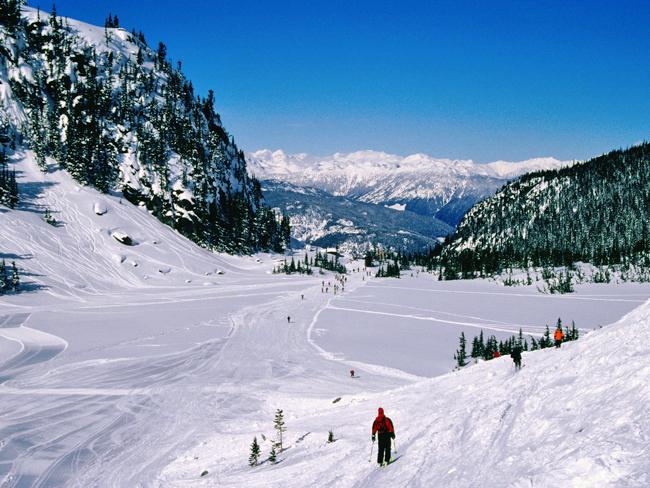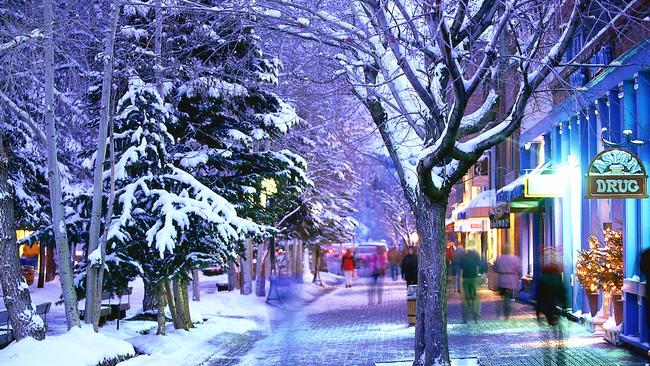World's best ski adventures
FROM skiing near Bethlehem in December to the world's highest ski fields - Lonely Planet reveal the must-see snow spots.

FROM skiing near Bethlehem in December to the world's highest ski fields - Lonely Planet reveal the must-see snow spots.
THE ALBORZ MOUNTAINS, Iran
Fitness/expertise level: Beginners to powder hounds.
When: January, for mid-winter’s best skiing conditions.
Iran has several ski resorts in the Alborz Mountains - a range higher than the European Alps - including four within day-trip distance of the capital, Tehran.
Dizin is the largest of Iran’s ski fields. Its highest run begins at around 3500m, making it one of the world’s highest ski fields and it enjoys a six-month season (and converts to a grass-skiing venue in summer).
Another ski field worth a look is Shemshak, nearer to Tehran, which offers night skiing on floodlit slopes.
Expect easy to moderate runs at Dizin, while Shemshak is noted for its moguls and more difficult runs.
Just be aware that if you come to ski in the Alborz it’s purely about the snow, not the parties.
RUBY BOWL, Canada
Fitness/expertise level: Black diamonds (experts) only.
When: Both Whistler and Blackcomb are at their snowy best in January.
Consistently voted North America’s best ski resort - and considered by many people to be the best in the world – Whistler-Blackcomb contain almost 200 longer-than-average marked trails and the highest vertical drop (1609m) of any North American ski field.
Wander around the back of Blackcomb to Ruby Bowl and it gets even sexier. Ruby Bowl is one of 12 alpine bowls on Whistler-Blackcomb and is reached by a climb up Spanky’s Ladder from the top of the Glacier Express chairlift. It has Whistler-Blackcomb’s best powder, falling in continuous steeps for more than 600m.

JADE DRAGON, China
Fitness/expertise level: Beginner to intermediate runs; the greater difficulty is the altitude.
When: January- Chinese winter means Chinese snow
Yunnan province’s Jade Dragon Snow Mountain Ski Resort became the world’s highest ski field in 2009 when Bolivia’s Chacaltaya glacier melted away to nothing.
The gondola at Jade Dragon reaches 4516m above sea level, and surface tows have also created a small ski area above the gondola station. Such is the scarcity of oxygen at this height that the ski resort sells altitude sickness pills and oxygen bags.
Conversely, owing to its southern location, Jade Dragon is also China’s warmest ski field so you can come here to bask in more than altitude records.
NORDIC WORLD SKI CHAMPIONSHIPS, Oslo, Norway
Where: Location changes each championship
When: Late February
Getting involved: Check the International Ski Federation website for scheduling and ticketing details: www.fis-ski.com.
The real crowd pleaser of the World Ski Championships is the ski jump, where seemingly fearless athletes launch themselves from a ramp and fly with grace and aplomb (ideally) over great distances.
Ski jumpers earn points by landing on or over the K-spot (90m or 120m, and 200m in the ski-flying event) and for style.
It’s a breathtaking and teeth-clenching event to watch, but the ski jump is just one of three disciplines in the Nordic World Ski Championships. Others include cross-country skiing and Nordic Combined – a combination of cross-country and ski jumping.
Championship competition is composed of 12 different events, including the popular ‘mass start’, with all competitors surging forward simultaneously and racing to the finish line, sprints and relays.
There are four events to choose from in the Nordic category, each with varying cross-country courses and varying numbers of jumps.
VASALOPPET
Where: From Salen to Mora, Sweden
When: Early March
Getting involved: Register online at www.vasaloppet.se.
If competing is not for you, then find a vantage point at the start or finish of the race or visit the Vasaloppet museum beside the famous Portal that marks the finishing line.
The Vasaloppet - a 90km cross-country ski race – is the oldest, longest and biggest cross-country ski race in the world. A total of 14,000 anxious, shivering skiers brave subzero temperatures in the village of Salen, before being seeded into 10 groups with 350 elite skiers at the front of the field.
Novices compete with those who have raced 30 times, as they strive for rhythm, speed and to simply catch their breath in a race that is a true test of endurance.
Drink stations en route dispense warming cups of soup or salty bouillon to sustain skiers.
After they see the church spire in Mora, the cheers of hundreds of onlookers carries them to the finish line, completing their marathon under a sign that bears the race’s now famous motto: ‘In the footsteps of our forefathers for the victories of tomorrow’.
FIS GRASS-SKIING WORLD CUP FINAL
Where: Location changes annually
When: First week in September
Getting involved: The World Cup takes place from mid-March, through to September in various locations around the world. Check the Federation Internationale de Ski’s website for details: www.fis-ski.com.
Buy a pair of grass skis, grab a helmet and find a green slope to hurl yourself down. Grass skiing was invented back in the ’60s by Richard Martin. He was trying to develop a way for skiers to train and get into shape before the winter ski season and soon found it could be enjoyed in its own right.
Grass skiing is gradually gaining in popularity. Originally, the majority of devotees hailed from Europe, but grass skiing is spreading further afield and has associations in China, Iran, Japan and Taiwan among others.
THE HAUTE ROUTE - France, Italy and Switzerland
Fitness/expertise level: High level of fitness and experience required.
When: April is the prime month to be on the Haute Route.
Unquestionably one of the world’s great ski-touring trails, the Haute Route links the two most celebrated mountains of the European Alps – Chamonix to the Swiss town of Zermatt.
Covering around 140km, the route was pioneered on foot by members of the Alpine Club and their guides in the 1860s, and while it remains a popular summer trek (on a slightly different route), it’s best known as a classic and popular spring ski-mountaineering expedition.
It’s prized both for its challenging terrain and its parade of big-name mountains – Mont Blanc, Monte Rosa, Grand Combin and the Matterhorn.
Ski tours usually take six or seven days to complete this hut-to-hut route, which crosses more than 20 glaciers and follows a high line across the snow-plastered slopes of the Alps, rarely dipping into valleys.
Pushing across a number of passes, including the spectacular Val d’Arpette, the route tops out on the summit of Pigne d’Arolla, at around 3800m.
All up, you’ll drag your ski-strapped feet over climbs of around 10,000m - enough to have reached the summit of Mt Everest from sea level, with Ben Nevis as a warm-down.
Skiing days on the Haute Route can be long and difficult, so limber up on less grueling tours elsewhere before slapping on the skins at Chamonix.

THE CEDARS, Lebanon
Fitness/expertise level: Ski bunnies to Arctic hares.
When: December, feel festive by skiing on the nearest snow to Bethlehem.
Lebanon likes to boast that it’s the only country in which you can ski in the morning and swim in the Mediterranean in the afternoon. It’s an appealing mix in which to wind down from a busy year.
Lebanon’s highest and oldest ski field, the Cedars, is located less than 30km from the Mediterranean coast and people have been skiing here since the 1920s.
It’s less developed than other Lebanese ski resorts, but it’s the second most popular, particularly for those who actually ski (rather than pose). And with runs that begin around 3000m, the season usually starts in mid-December, ahead of other resorts in the country.
There are also numerous off-piste opportunities at the Cedars if you’re feeling more adventurous.
VALLEE BLANCHE, France
Fitness/expertise level: Good fitness and endurance required.
When: February. You need a lot of snow to ski 22km, so come in deep winter.
From the evergreen Alpine resort town of Chamonix – the venue for the very first Olympic Winter Games in 1924 – ride the Aiguille du Midi cable car to its needle-tip end high above the town. Climb out nervously on an arête and strap on your skis for the longest run in Europe.
You’ll get a birds-eye-view of the Vallée Blanche and the famous Mer de Glace - the Alps’ second-longest glacier – as the cable car descends 2760m and 22km back to Chamonix.
Perfect skiing conditions are on offer, though you’ll be on your planks for up to five hours. At times you’ll also be threading between crevasses, so it’s imperative you make the descent with a qualified guide. Chamonix is chock-full of them; begin your search at www.chamonix-guides.com.

These are edited extracts from Lonely Planet’s A Year of Adventures and A Year of Sport Travel, © Lonely Planet, 2009 & 2010. lonelyplanet.com
![]() Video: Top 10 ski jumps
Video: Top 10 ski jumps



